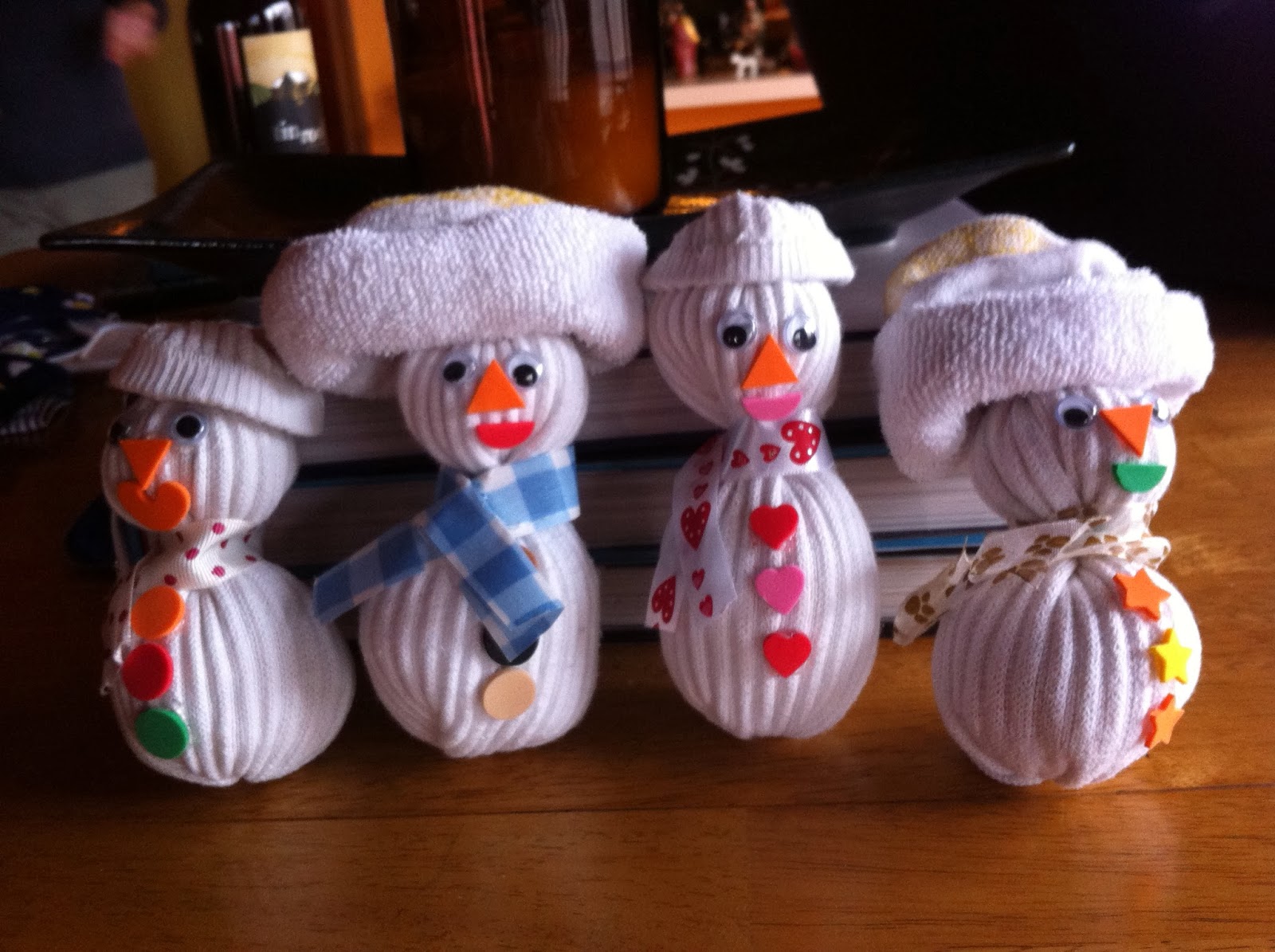Furthermore, it wasn't a huge snowfall that brought this handsome snow family into existence; it was the fact that Pa-pa had some old socks to throw away and the kids and I some time on our hands on a Saturday afternoon in January.
Before heading to the kids' house last weekend, I packed a bag with four old socks, a pair or scissors, a partial bag of leftover fiber-fill, my hot glue gun, some assorted scraps of ribbon, a handful of rubber bands, and some odds and ends of foam pieces and googly eyes from old arts and crafts kits.
In my mind's eye was a picture I had seen on Facebook showing how to make little sock snowmen in a simple five-step process. With a little tweaking for the sake of practicality and a few changes to accommodate already-on-hand materials, it was possible for Sooby, Pooh, Bootsie, and me to create our snow creatures well within the nap span of their eighteen-month-old brother (which, I'm sure, streamlined our process considerably.)
In a nutshell, here are directions for making one of these snow people:
- Cutting: Cut the sock in two pieces just above the place where the ribbing ends. Save the "toe" end to roll up and fashion a hat, as you see above with Checker Board and Star Boy. (Sooby and Bootsie wanted smaller, more feminine hats, so for Polka Dot and Valentina, we simply turned down the excess sock top after stuffing to create a retro "pillbox" look.)
- Stuffing: Turn the ribbed "tube" inside out, and secure a rubber band tightly around one end. Turn the tube right side out again, and stick in a handful of stuffing in the opening to create a ball shape for the snowman's body. Add another, smaller ball of stuffing for the head, and secure another rubber band at the top.
- Making Hats: Leave enough sock at the top to turn down if you are going for the pillbox. For the stocking-cap style, modeled by Checker Board and Star Boy, roll a couple "cuffs" at the cut end of the "toe" portion of the sock. Use dots of hot glue as needed to secure the hat in position on the snowman's head.
- Decorating: Glue on googly eyes, and have kids choose facial features and buttons from whatever assortment of foam pieces, buttons, etc. you have. Hot glue those on.
- Adding the Scarf: Finish with a scarf made of ribbon or fabric. Wrap and hot glue as needed to hide the rubber band at the snowman's neck.
Because we used fiber-fill rather than the suggested rice, our snow people don't stand up on their own and are more like dolls than decorations. However, with the kids aged 6, 4, 3, and 1, I think this is most likely a practical substitution. Otherwise, I am sure we might have been sweeping up rice before the day was out.
I think the kids had fun making and naming their snow dolls. They seem to be the perfect size for little hands. They are perfect for playing with puppet-show style or snuggling with at bedtime.
The only bad thing, as far as I can tell, is that I didn't make one for myself. As cute as the kids' snow people turned out, I am thinking Pa-pa had better keep a close eye on his sock drawer.
